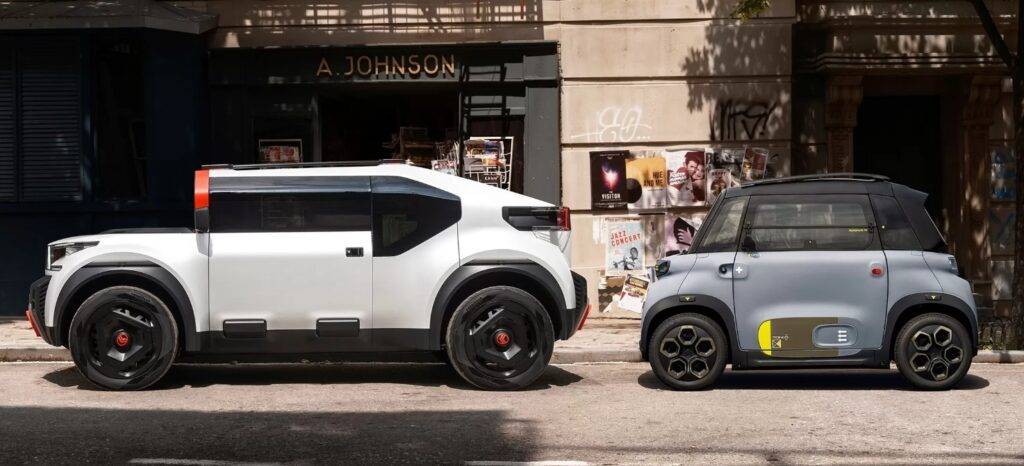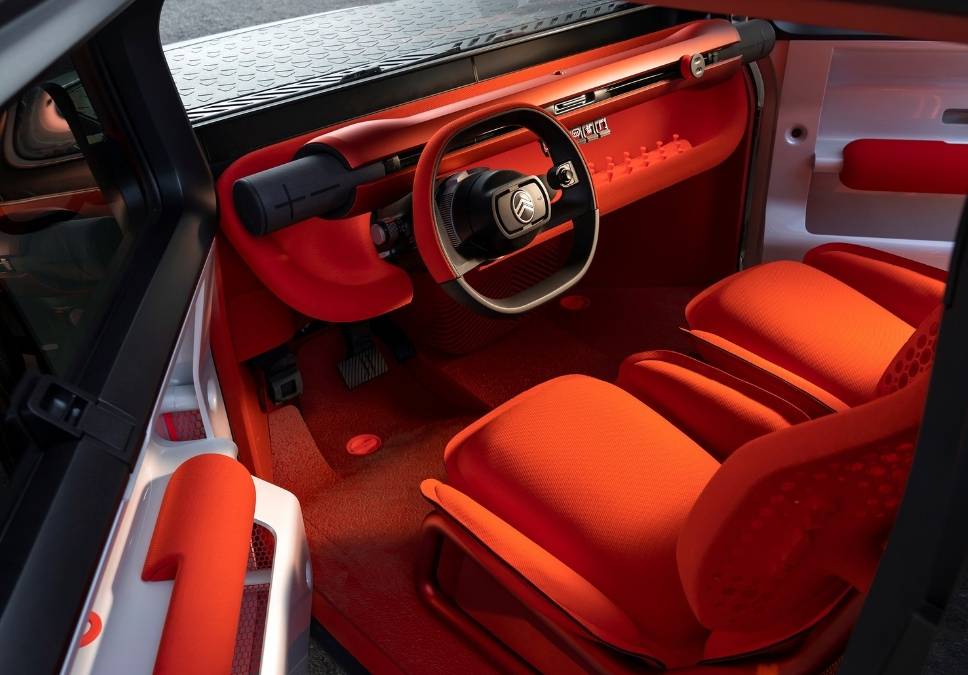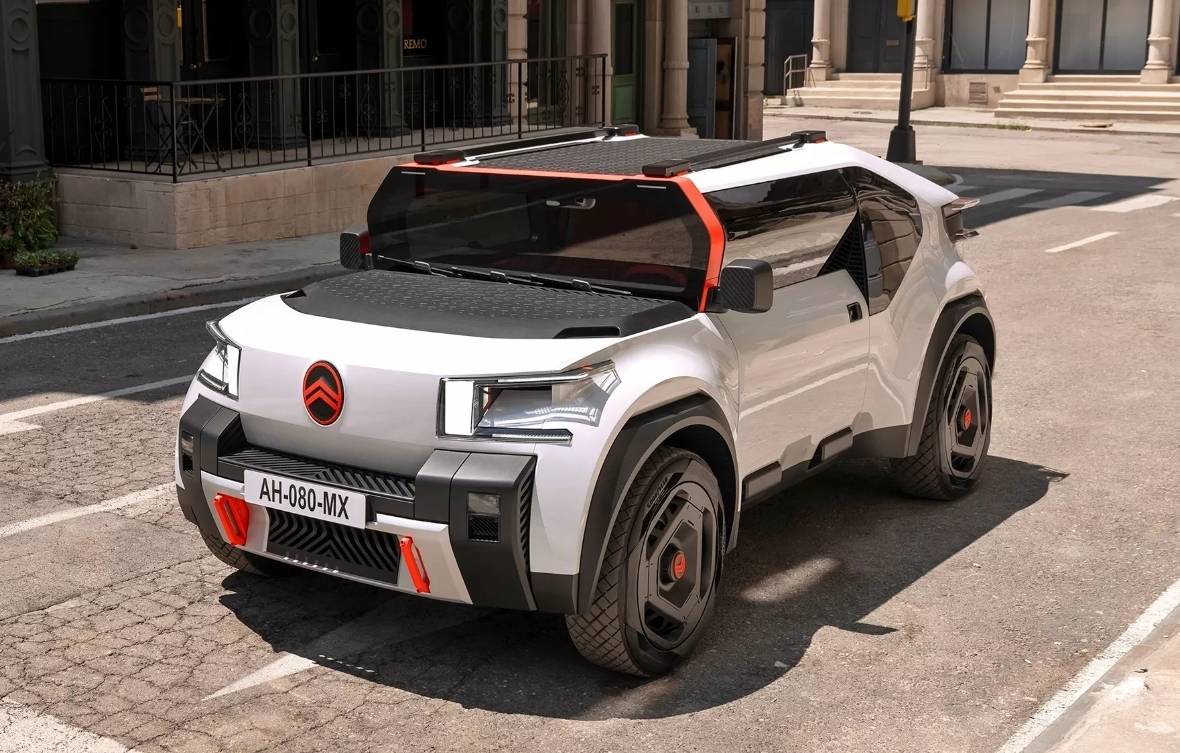The French brand Citroen, which is part of the Stellantis Corporation, presented the Oli software concept, showing the vector of technical development and the philosophy of mass electric vehicles in the near future. In this future, we will have to be content with little, protect nature and exploit things for a long time.
Two days ago, Citroen showed an updated emblem, and today – its first carrier, the Oli electric concept. This concept develops the ideas of modular design and primitivism, embedded in the serial urban ultra-budget electric car Citroen Ami, but Oli is technically more advanced and is positioned as a family car for every day with an unlimited service life.
Citroen is preparing its customers for the transition from the era of consumption/abundance to the era of thrift, in which humanity will get rid of everything superfluous and will be content with little. The frenzied growth in demand for luxury cars observed since the beginning of the COVID-19 pandemic at first glance runs counter to the concept of the era of thrift, but the fact of the matter is that the objective trend is that the rich are getting richer, the poor are getting poorer, and the middle class is being eroded, many of its representatives have moved into the category of the poor. In short, the Shirnarmass will have to tighten their belts and drive simpler and cheaper cars than they are used to. Moreover, in the new era there is no place for the so-called disposable machines, in which the resource often coincides with the warranty period.

It is assumed that the hypothetical serial Citroen Oli will come to the family for decades, and if it is suddenly broken to a non-repairable state, then the parts will be used to support the life of other Oli. Almost all components and assemblies can be quickly replaced with new ones over time, and recycled plastic parts for exterior and interior decoration can be replaced with the same ones of other colors and textures in order to somehow diversify long-term operation.
The overall length of the Citroen Oli is 4.2 m, the width is 1.9 m, the height is 1.65 m. The declared curb weight is only 1000 kg, it was achieved by severely reducing the range of parts used. For example, in symmetrical front doors without power windows, there is no interior trim, hinges, fasteners and technological holes are not covered by anything, but there are convenient mesh pockets and soft armrest cushions. The openwork backs of the chairs are made of springy plastic. In the front panel, the central element of which is a transverse pipe, there are only two central air ducts, and removable audio speakers with Bluetooth connection took the place of the side ones. Music and navigation are in your smartphone, hint pictures are displayed on the projection screen on the windshield.
The windshield is flat and mounted vertically. This was done to reduce the cost of the part – in the vertical position, the area of \u200b\u200bglass is the smallest. Bad for aerodynamics? It doesn’t matter, because the Citroen Oli’s top speed is limited to 110 km/h. In addition, special air channels in the headlights direct some of the ram air over the car. The hood and roof of the Oli are covered with flat and very strong composite panels filled with recycled cardboard, they are very light and yet able to support the weight of an adult, that is, Oli can be used as a stepladder, bench or even a place to sleep.
The trunk of the Citroen Oli is designed like a pickup truck, with a hinged side and a sliding transparent top section. The width of the cargo platform is 994 mm, the length is 679 mm (with the rear seats folded down – 1050 mm), there are removable storage boxes on the sides.

There are no details about the Citroen Oli power plant, it is only known that it is equipped with a 40 kWh battery, the full charge of which is enough for 400 km of run. The battery can be used as an energy storage in the household – to collect and distribute what the solar panels have developed in the yard and on the roof of the house. Household sockets in the back allow you to cook a meal at a picnic or dry your hair with a hairdryer after swimming.
Another interesting detail is the wheels, they are composite for Citroen Oli: the core is stamped and the rim is cast, the developers considered this combination to be optimal in terms of cost and design. The 235/55 R 20 Goodyear Eagle GO tires are made from recycled rice hulls, olive oil and natural resins, no petroleum products.
There will be no serial Oli, but we will see many of the ideas embedded in it in the upcoming mass models of Citroen. We also encourage our readers to compare the Citroen Oli with Dacia’s recent concept, which offers a similar approach to engineering and materials.
